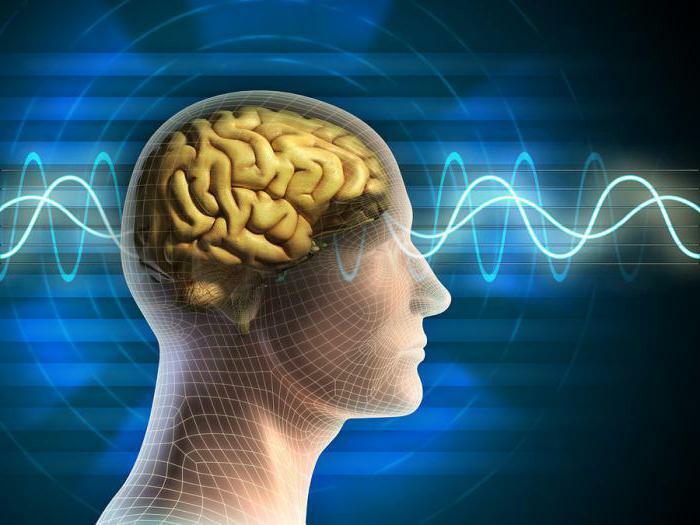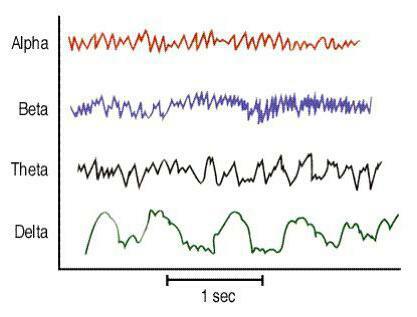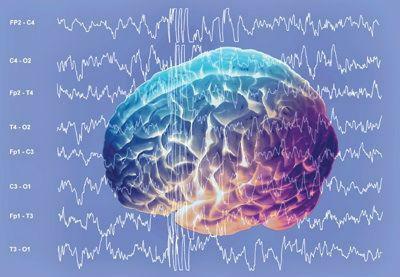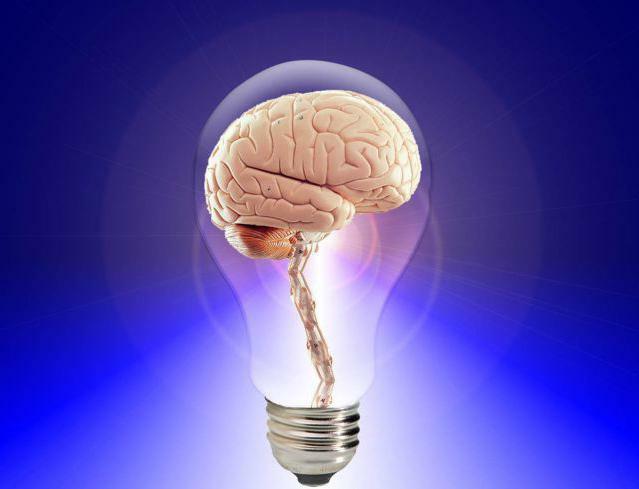Alpha rhythms of the brain: description, features and functions
The brain is a complex system with resonant-dynamic response. Due to external conditions, he can change the rhythm of his work. Its structure is endowed with natural electro-polarization, depending on the functioning of which the potential of the energy system changes.

Today, four main rhythms of the brain are distinguished, including the alpha rhythm. Consider what it is and why it is so important to be able to be in this rhythm.
The main rhythms of the brain
Today, there are four main types of electrical oscillations of the human brain. They have their own frequency range and state of consciousness.
- Alpha-rhythm appears during rest in a waking state.
- Beta-rhythm - usual at wakefulness.
- The delta rhythm of occurs in a state of deep sleep.
- Theta-rhythm is typical for shallow sleep or deep meditation.

Alpha rhythm of the brain: discovery of
Alpha waves were discovered decades ago by German psychiatrist Hans Berger when he noticed oscillations whose frequency was of the order of 10 per second. Their amplitude is very small, only up to thirty millionths of a volt.
It is interesting that the alpha rhythm is observed only in humans. Not surprisingly, after a quarter of a century, a whole section of science appeared, called electron-cephalography, or EEG.
Studies of alpha-rhythm and resonances of the Earth-ionosphere
In 1968, D. Cohen in a non-contact way revealed magnetic oscillations around the head that appeared together with electrical biopotential oscillations of the brain. By frequency, they coincided with those that are recognized as "alpha rhythms of the brain."He called these oscillations a magnetoencephalogram.
Another scientist, Gray Walter, before him, back in 1953, suggested that the ability of the brain to perceive the electrical effect provides opportunities for communication with the pervasive energy of all things. It is known that the electromagnetic wavelength, to which the alpha-rhythm frequency corresponds, is close to the circumference of the Earth and the resonance of the "Earth-ionosphere".

What we are talking about becomes clear after studying the works of Schumann, who in 1952 predicted, and after that proved experimentally the existence of resonances of the Earth-ionosphere. These frequencies were called standing waves in the spherical waveguide "Earth-ionosphere".The length of the electromagnetic wave of the main resonance is close to the length of the circumference of the Earth. Schumann, along with Kening, noted that during the day, the so-called "train", whose amplitude reached 100 μV / m, with a frequency of 9 Hz, lasted mainly from three tenths to three seconds, but sometimes thirty seconds, became active. The most intense spectral lines were in the range from 7 to 11 Hz. Most often within a day the frequency spread is observed in the range from +/- 0,1 - 0,2 Hz.
During the day the strongest resonant oscillations of the Earth-ionosphere are recorded. On quiet days at a frequency of 8 Hz, the spectral density of the oscillations is 0.1 mV / m Hz, and during magnetic storms the readings increase by 15%.
Most experts agree that excitation of electromagnetic fluctuations is associated with discharges of atmospheric electricity. We are talking about lightning, arising on the surface of the entire globe.

The essence of alpha rhythms
In the human brain, the manifestations of brain activity, as well as alpha rhythms, reflect rather complex psychophysiological processes. Experimental and statistical data indicate that the alpha rhythm can be congenital and even hereditary in nature.
Scientists by Warren McCullock and Gray Walter have hypothesized that with an alpha-rhythm, an internal scan of the thought images takes place while focusing attention on some problem. An interesting coincidence was found between the period of inertia of visual perception and the frequency of alpha waves.
Biorhythms during sleep and wake
When a person closes his eyes, his alpha brain rhythms become stronger. And when the eyes open, most of the people these waves disappear. Based on this, Gray Walter suggested that the alpha rhythm is a scanning search for solutions that disappear when they are found.
Alpha waves begin to be gradually replaced by theta rhythm when drowsiness occurs. And in a quietly sleeping person, delta waves predominate, which, nevertheless, can be supplemented during sleep with other rhythms, for example sigma rhythm.

Gray Walter is confident that sleep is a legacy of a man's past times when he needed to get away from active activities. The delta waves are, as it were, guarding the brain.
Abstract thinking and reaction rate
Alpha rhythms of the brain are very individual in humans. Studies have shown that in the main number of people for whom they were expressed, the ability to abstract thinking was observed.
Among the subjects, though not often, there were people who had no alpha rhythms completely even when they closed their eyes. For such people it was typical to think with the help of visual images, but it was problematic for them to solve abstract questions.
The alpha-rhythm index, according to the scientist, affects the speed of mental and sensory responses. With a faster pace, the speed of decision-making and activity increases.
From what has been said it becomes clear that the alpha rhythm is associated with the thinking that arises in the brain. The ability of imagination, foresight and calculation was inherent in man even in the early stages of history. But the mechanisms of control and abstract thinking were acquired a little later. We call such qualities the will of man.

Difference of a person from all other creatures
Alpha rhythm is the norm for a person. This is what distinguishes us from the animal world. In the brain of animals only isolated and irregular individual elements of such processes were recorded.
It was Kening and his assistants who first discovered the connection between the alpha rhythm of the human brain and the fundamental resonance frequency of the Earth in 1960.As a result of carried out mass research for a long time it was found that when the field strength was increased, the reaction was reduced by an average of 20 ms. When there were irregular oscillations from 2 to 6 Hz, the time increased by 15 ms.
Special importance of alpha rhythms
Alpha rhythm in children is formed by 2-4 years. In an adult, he is observed when he closes his eyes and does not think about anything. At this time, its bioelectric oscillations are slowed down, and waves having oscillations from 8 to 13 Hz increase.
According to the studies, in order to learn new information, it is necessary to stimulate in your brain alpha rhythms. When relaxing, without focusing on anything, a state of tranquility comes, which is called "alpha-state".In the practice of oriental martial arts, it is also called the state of the master. It is at such moments that the muscle response increases by a factor of ten or more, in contrast to the usual beta rhythms.
In a healthy person, wakefulness is dominated by alpha and beta rhythms. And the more the first, the less the organism is exposed to stress, the more a person has the ability to learn and fully rest. At such times, the body produces enkephalins and beta-endorphins. This is a kind of natural "drugs", that is, substances that are responsible for rest and joy.
Alcoholics and drug addicts are not able to enter the alpha rhythm without additional stimulants. But in a state of intoxication, the power of the alpha range in them is greatly increased. This explains their addiction.
